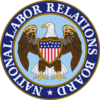The main steps in the representation case process under the proposed amendments
Under the proposed amendments, a typical representation case in which a union seeks to represent an unrepresented unit of employees would proceed this way (if the union and the employer were not able to reach an election agreement):
1. Petition: The union files an election petition with the Board’s Regional Office, along with a “showing of interest” demonstrating enough employee support (30% of the unit described in the petition) to justify an election. The union serves the petition on the employer, along with a description of Board procedures, informing parties of their rights and obligations in the process, and a “statement of position” form.
2. Investigation: The Board’s Regional Director investigates the petition and, if it is properly supported, serves the parties with a notice of hearing, setting the hearing for seven days from service (absent special circumstances). The employer then posts an initial notice of election (and distributes it electronically, if appropriate) for employees in the designated unit.
3. Identifying and narrowing the issues: No later than the date of the hearing, the employer files and serves its “statement of position” form, setting forth its position on election-related issues that it intends to raise at the hearing, including the Board’s jurisdiction; the appropriateness of the bargaining unit sought by the union; and the type, date, and location of the election. The employer is not required to state its position on the eligibility of individual employees, as individual eligibility can be contested via the challenge procedure during the election. The employer will also file and serve a preliminary list of voters, stating their name, work location, shift and classification.
The union responds to the positions taken by the employer. Both parties describe the evidence they would offer relevant to any disputed issues.
4. Hearing: The Board’s hearing officer identifies disagreements and accepts evidence only concerning genuine disputes of material fact. Parties will not be permitted to litigate issues that they did not identify in their statement of position or response, except that any party may contest the Board’s statutory jurisdiction at any time.
Litigation of disputes involving the eligibility of voters constituting less than 20% of the unit will be deferred until after the election.
5. Decision on pre-election issues: Based on the record created at the hearing, the Regional Director will determine whether a “question of representation” exists and, if appropriate, will direct an election, specifying its type, date (the “earliest date practicable consistent” with the rules), time, and place. The employer will post a final notice to employees of the election (and distribute it electronically, if appropriate) for at least two days before the election and the Regional Director will distribute the final notice to employees via email if practicable.
6. Election: Within two days of the direction of election (absent extraordinary circumstances), the employer will provide a final list of eligible voters to the union, including phone numbers and email addresses when available. On the date stated in the direction of election, a secret-ballot election will be held, the ballots counted, and a tally prepared. If a voter’s eligibility is disputed, he or she is permitted to vote under challenge.
7. Decision on post-election issues: Within seven days of the tally of ballots, a party may file with the Regional Director objections to the conduct of the election or conduct affecting the election results together with a description of the evidence supporting the objections. The Regional Director will resolve the objections and any potentially outcome-determinative challenges to ballots, after a hearing (if necessary) commencing 14 days after the tally or as soon thereafter as practicable.
8. Review by the Board: The parties may ask the Board, in its discretion, to review the Regional Director’s pre- or post-election decisions.


